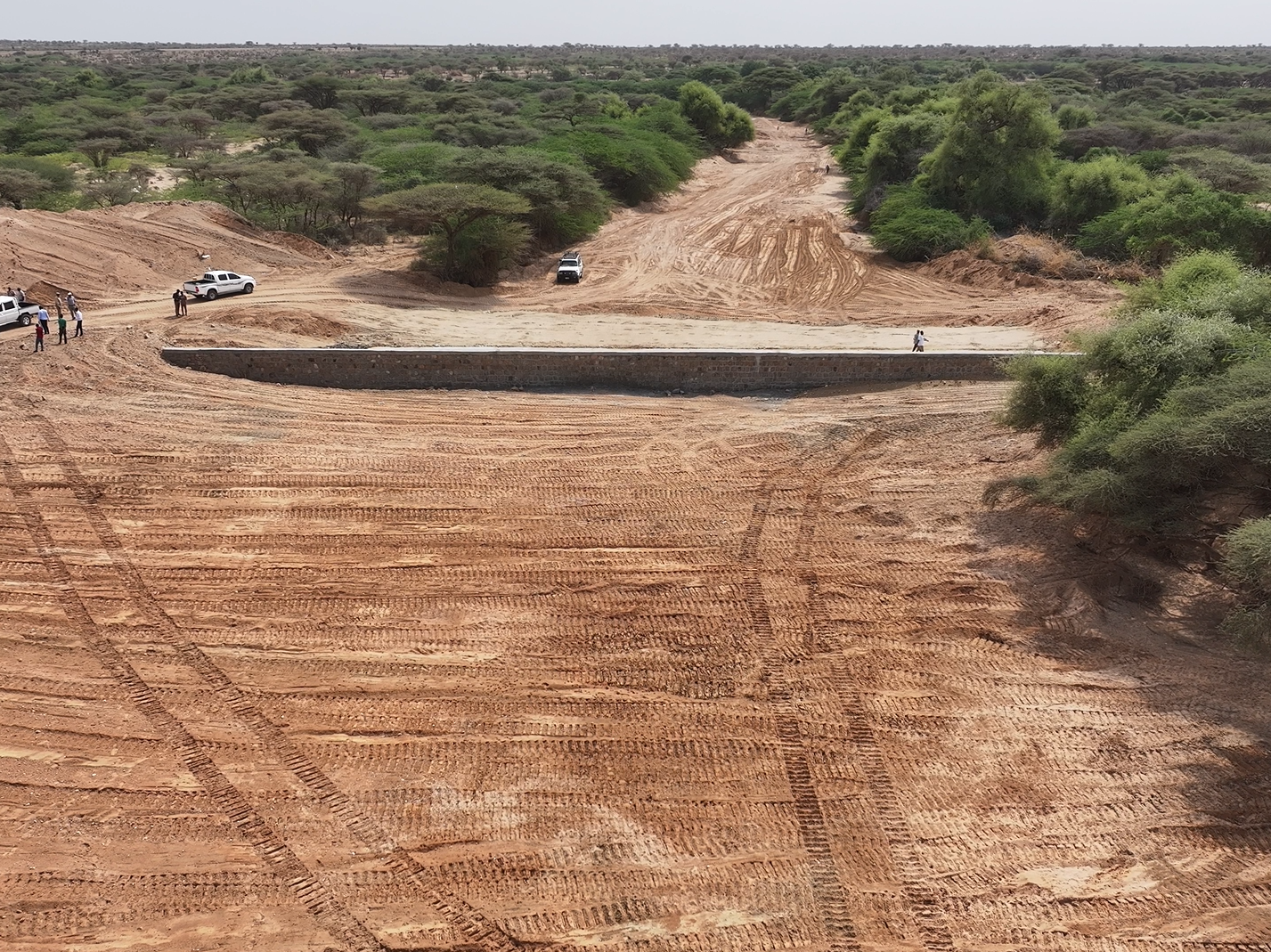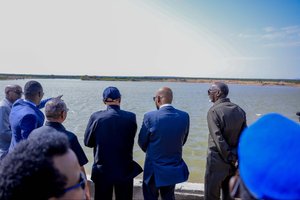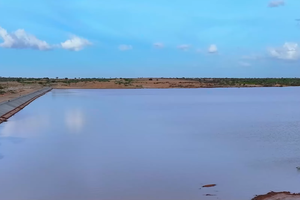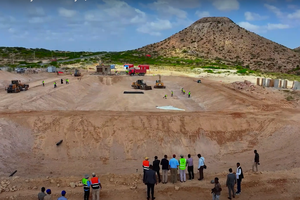The completion of the Kalqoray Dam represents a monumental step forward for water resource management in Somaliland. Capable of holding an impressive 1.8 million cubic meters of water, the dam is a significant infrastructure project designed to capture and store rainwater. While its construction was a considerable undertaking, the project's true long-term value lies in the meticulous efforts undertaken to ensure its sustainability. As highlighted by multiple key figures involved in the project, the primary threat to the dam's longevity is the accumulation of sand, a challenge addressed through a combination of strategic engineering and ongoing maintenance.
A central component of this sustainability strategy is the construction of a sand dam, a crucial secondary structure located upstream from the main reservoir. The dam site manager, Mr. Sayid, emphasized the importance of this feature, noting, “The Purpose of the sand dam is to prevent the sand from filling the dam.” The sand dam is a formidable structure, measuring 65 meters long and featuring a foundation that is four meters deep, with an additional four meters extending above the ground. This substantial depth was designed to ensure the sand dam's durability and long-term effectiveness. The construction of this crucial component was completed efficiently, a testament to the hard work of the agency's employees. Both Mr. Sayid and Engineer Khalid Daahir acknowledged that while this initial sand dam is vital, more such structures may be necessary to fully secure the dam's future, reinforcing the idea that sustainable infrastructure requires continuous foresight and effort.
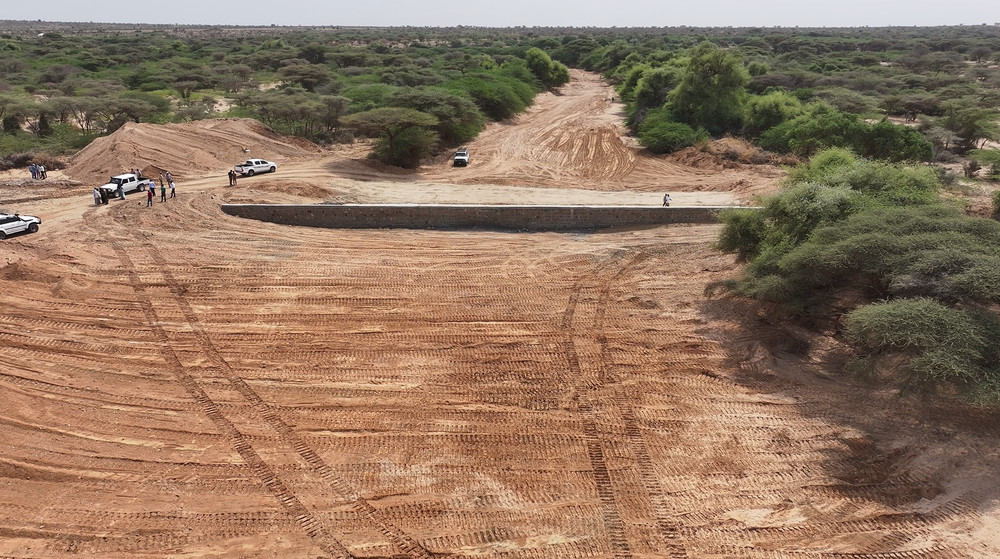
Engineer Khalid Daahir, reflecting on the project's significance, underscored the historical context for these preventative measures. He pointed out that many past dam projects in the region have failed due to sand accumulation, citing the Xumbo-Wayne Project as a prime example. For him and his team, the check dam is not just an added feature but a critical safeguard. "This check dam will ensure that the Kalqoray Dam is sustainable and lasts for a long time," he stated. This proactive approach to infrastructure management extends beyond construction, as Engineer Daahir also noted that the sustainability of the dam would be maintained through the "continuous removal of the sand manually as part of the dam infrastructure management." This blending of structural engineering and ongoing operational practice is key to the dam's success. Engineer Mohamed Saeed echoed this sentiment, calling the sand dam one of the "last segments" of a project that has been underway since 2022. He stressed that "the death of dams is sand," explaining the rationale behind the decision to build multiple check dams upstream.
Dr. Ahmed Hussein Cise, the President of Abaarso Tech University, highlighted the broader national significance of the project. He expressed his profound gratitude to the Hargeisa Water Agency for implementing a project that has long been a national aspiration: to create infrastructure that effectively utilizes rainwater. Dr. Cise remarked on the dam's capacity as a demonstration of the agency’s capabilities and readiness to undertake high-value projects. This sentiment was further supported by Mohamed Ali Darood, the General Manager of the Hargeisa Water Agency, who provided a comprehensive overview of the post-construction efforts.
The ultimate vision and management of the project were brought into sharp focus by Mohamed Ali Darood, the General Manager of the Hargeisa Water Agency. He detailed the critical work undertaken following the dam's completion, which included an assessment after rainfall in May filled the reservoir. This evaluation led to a significant increase in the dam's official capacity, from 1.4 million to 1.8 million cubic meters. As part of a larger plan to ensure the dam's longevity, he outlined a series of comprehensive sustainability efforts, including the removal of short trees near the dam, the manual collection of sand, and the construction of the final check dam. He underscored the vital role of these measures, stating, "The check-dam is the most important step as it will stop the sand from entering the dam." He also announced that the overall project now includes a garden for tourists, expanding the dam’s function beyond water storage to include a community and recreational benefit.
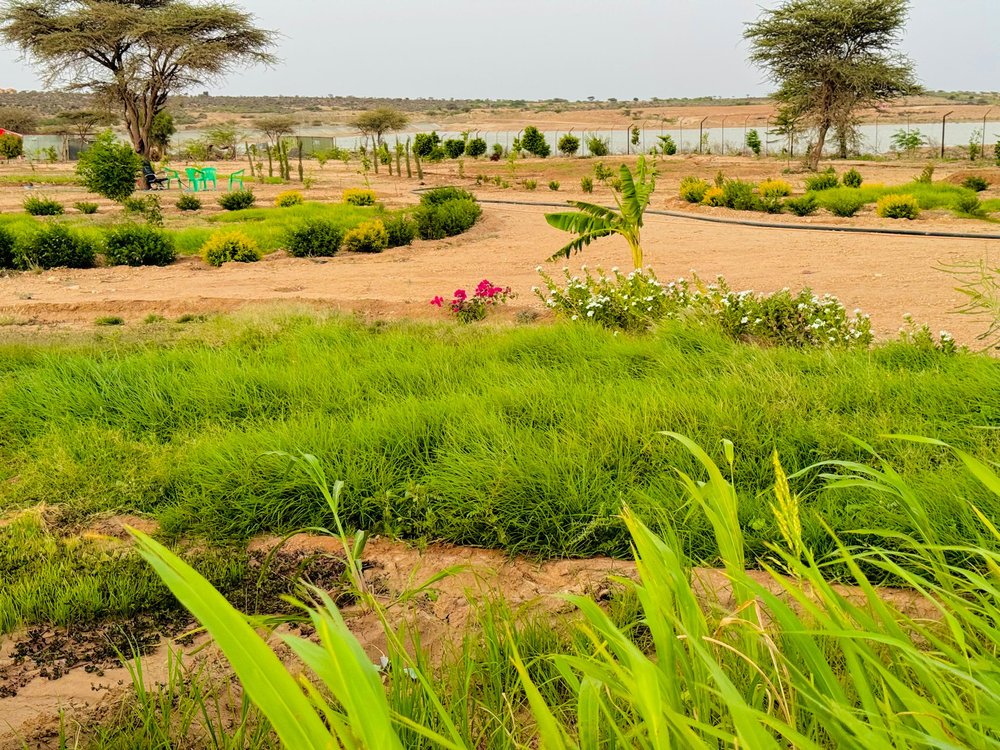
Finally, Ahmed Mohamed Cadaad, the Governor of Maroodi Jeex Region, offered a powerful endorsement of the project, noting his personal satisfaction in seeing it progress from an early construction site to a completed and filled reservoir. He commended the measures taken to enhance the safety and sustainability of the dam, encouraging all efforts that will ensure its longevity. The Kalqoray Dam, therefore, is not merely a piece of infrastructure but a symbol of national capability and a model for sustainable development, where careful planning and continuous management ensure its benefits endure for generations.
